Textiles of the Smithsonian, Ranked

Open access textiles—love that.
1.
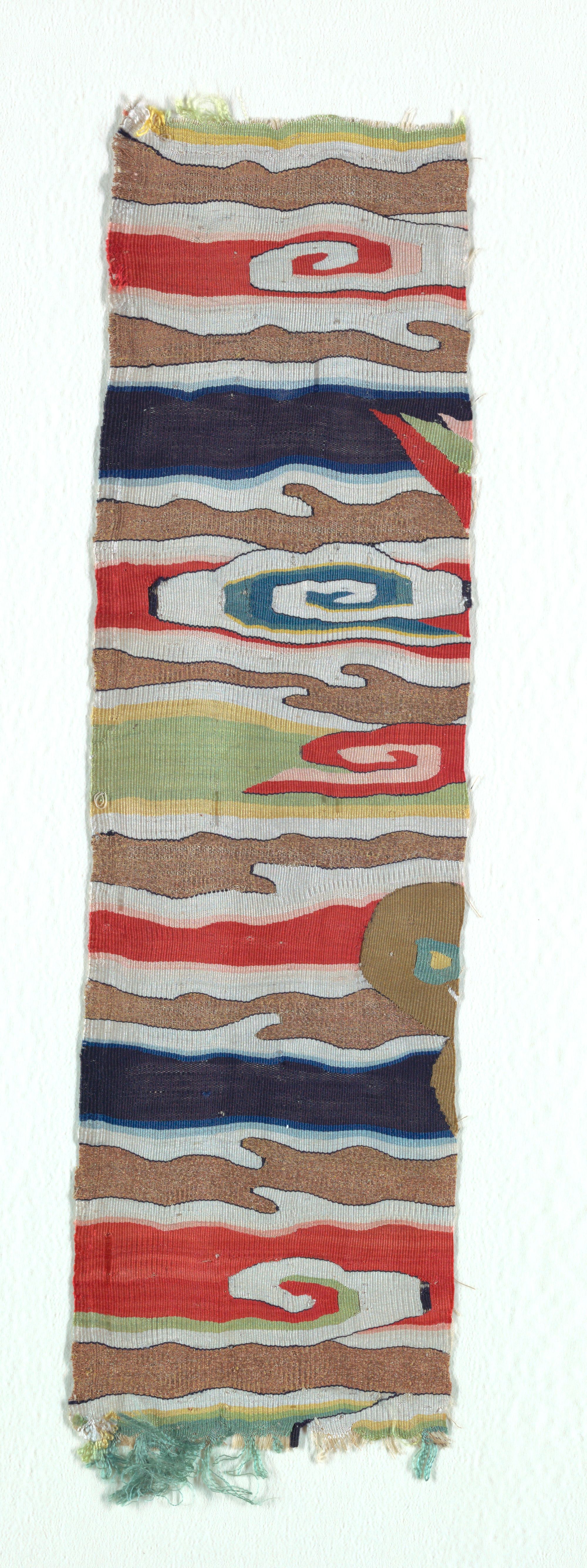
Title: Rank badge
Medium: silk, metallic Technique: tapestry woven
Description: Fragment showing a few feathers against a cloud background.
Made in: China
Credit Line: Gift of John Pierpont Morgan
Date: 15th century
Type: woven textiles
2.
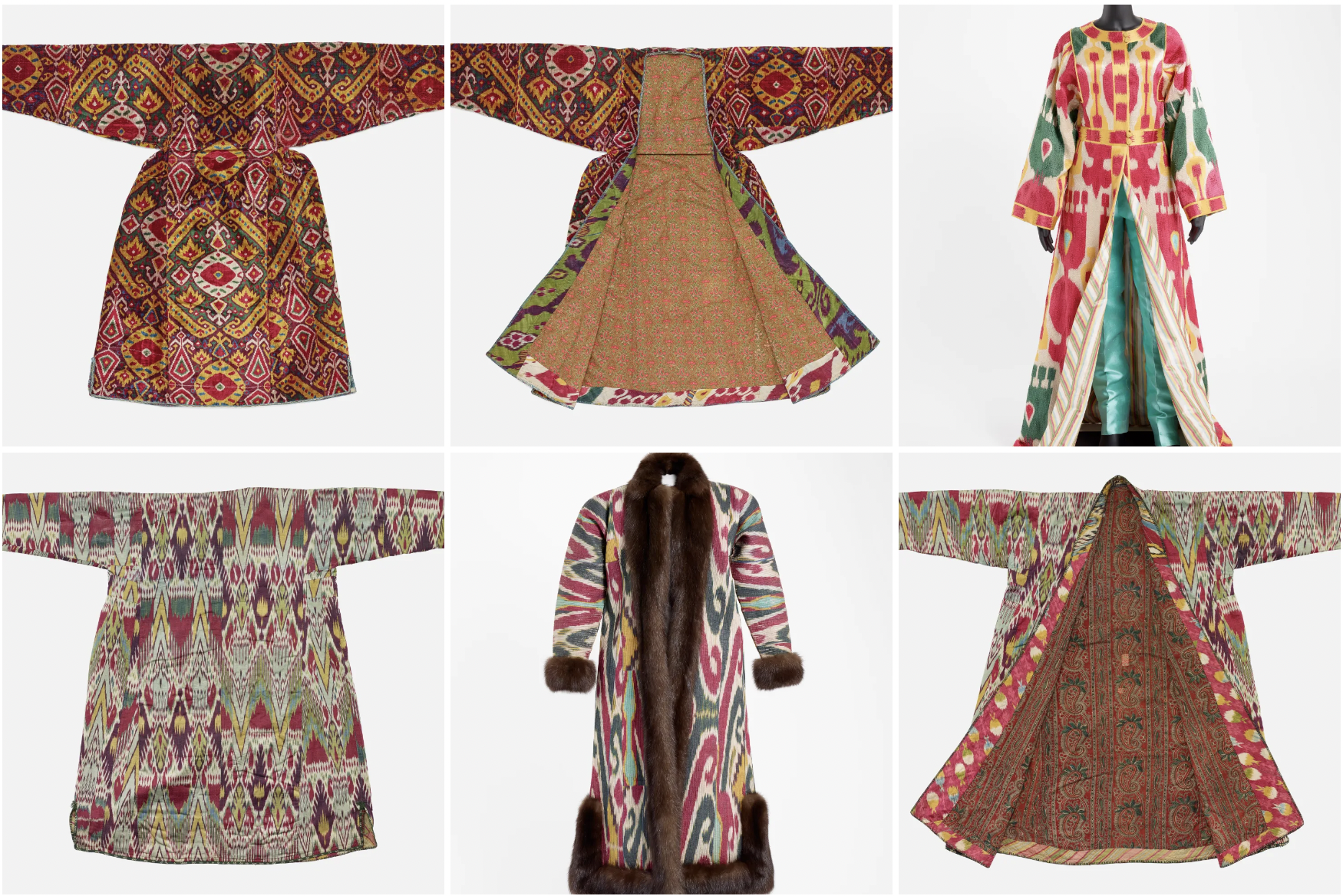
The Central Asian Ikat Collection
"Nothing signaled a person’s rank in Central Asia as conspicuously as a boldly patterned ikat coat. As valuable personal belongings, cherished ikat robes were handed down from one generation to the next and were eventually recycled into hangings, covers, or trims.
After you look at the dizzying designs of ikats for a while, you might begin to see familiar motifs—a comb, a jug, or a pendant here, a pomegranate or a flowering shrub there. These stylized and abstracted elements are transformed into repeated designs that dance across the surface of the fabrics. By modifying the color scheme or varying the scale of motifs, craftsmen introduced endless varieties of similar patterns with stunning visual results.
Inspired by the “unbelievably rich” colors of traditional ikats, Oscar de la Renta (1932–2014) was the first contemporary designer to introduce the distinct fabric into Western fashion. His creative responses to ikats include a classic trench coat that playfully appropriates Central Asian patterns. In contrast, the elegant fur-trimmed evening coat made from traditional ikat fabric is his contemporary interpretation of a Central Asian coat. De la Renta’s appreciation of ikat is perhaps best expressed in his evening gown from 2013. A masterful adaptation of both the outside and inside of a historic Uzbek robe, it integrates a characteristic ikat pattern and an exuberant floral design that refers to the linings found in so many Central Asian costumes."
3.

Designer: Jean-Baptiste Huet, French, 1745 – 1811
Manufacturer: Oberkampf & Cie., (Jouy-en-Josas, France, 1759–1815)
Description: A textile fragment with red printed on white ground showing merchant ships, a cock standing on a lion, and tree branches.
Date: 1789–1791
4.
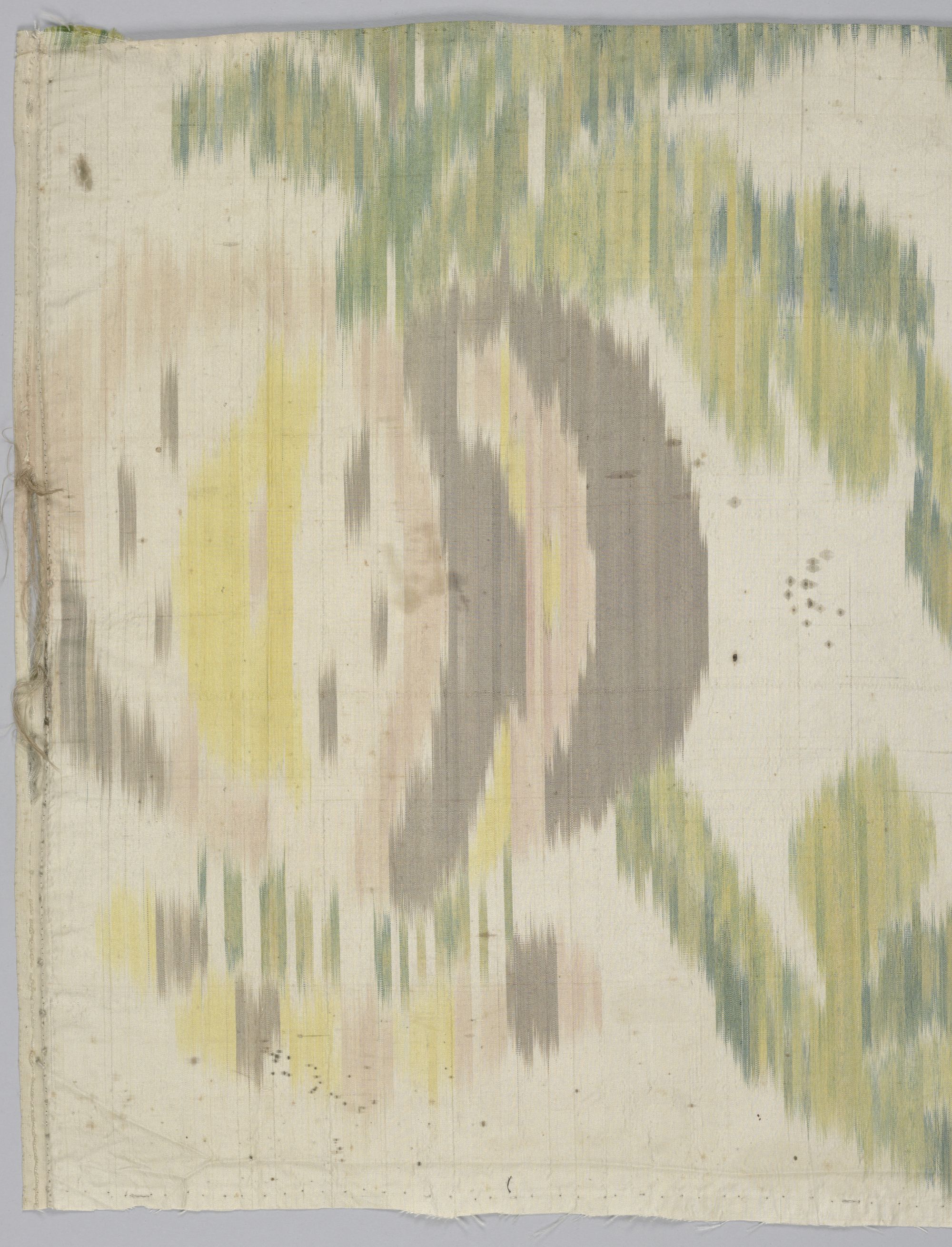
Description: Small cream-colored fragment with a chin [??—ed]
Date: 18th century
Medium: silk
Technique: warp printed
Made in: France
5.
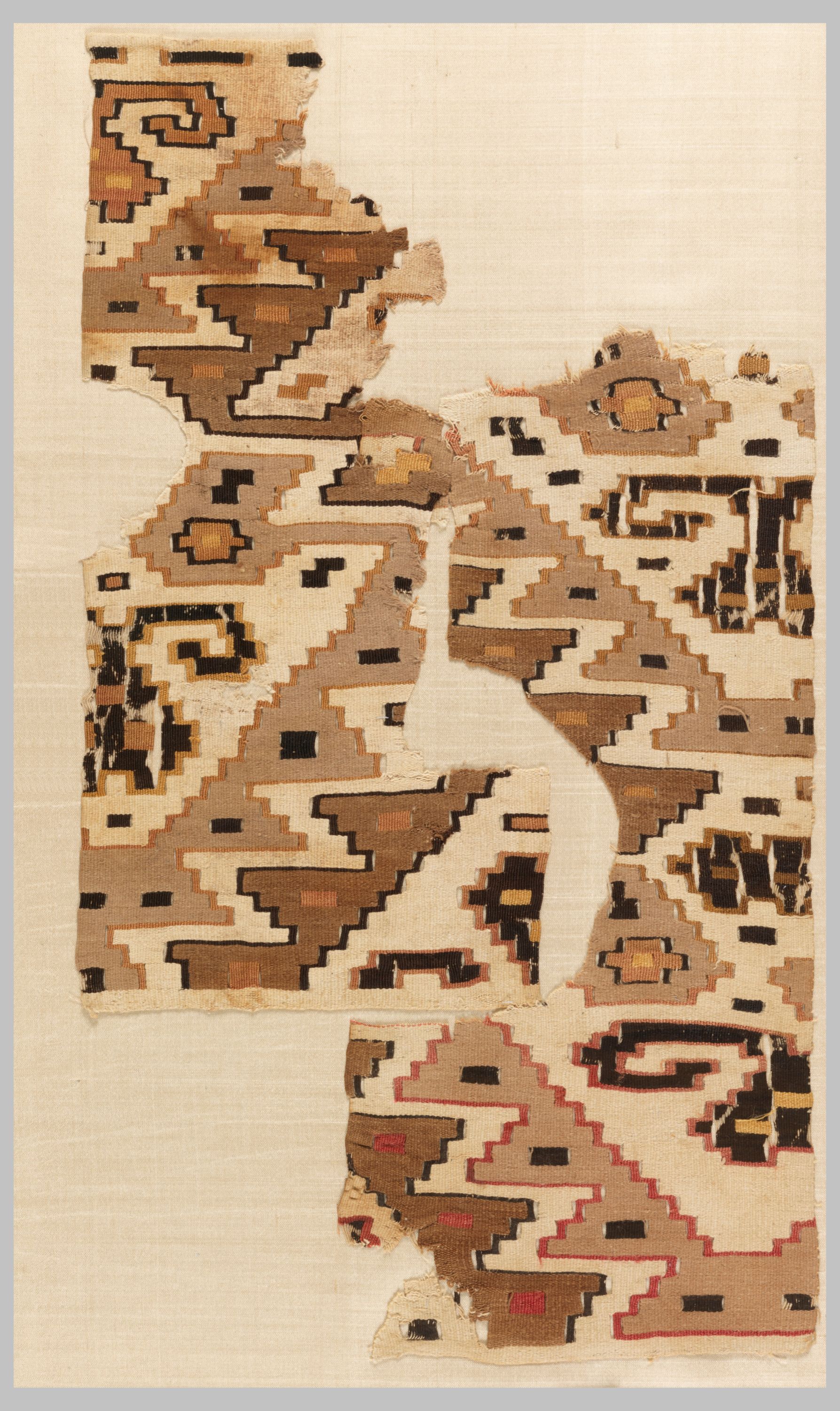
Description: Geometrical designs in tan and red. Motifs are outlined in contrasting shades.
Date: ca. 900 (!)
Medium: cotton, wool
Technique: slit tapestry
6.
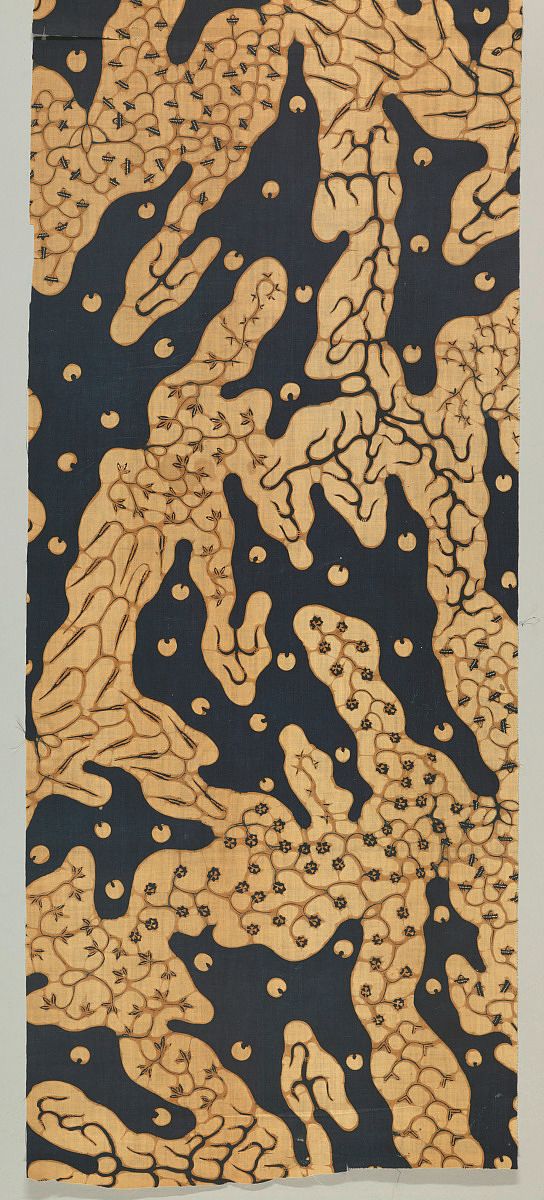
Description: Off-white organic forms on dark blue ground filled with creeping vines in tan showing different, dark blue, leaf and floral designs at the ends. Interspersed off-white dots with indent throughout ground.
Date: 19th century
Medium: cotton
Technique: wax resist dyeing (batik) on plain weave
Dimensions: H x W: 35.6 x 159.7 cm (14 x 62 7/8 in.)
Made in: Indonesia
7.
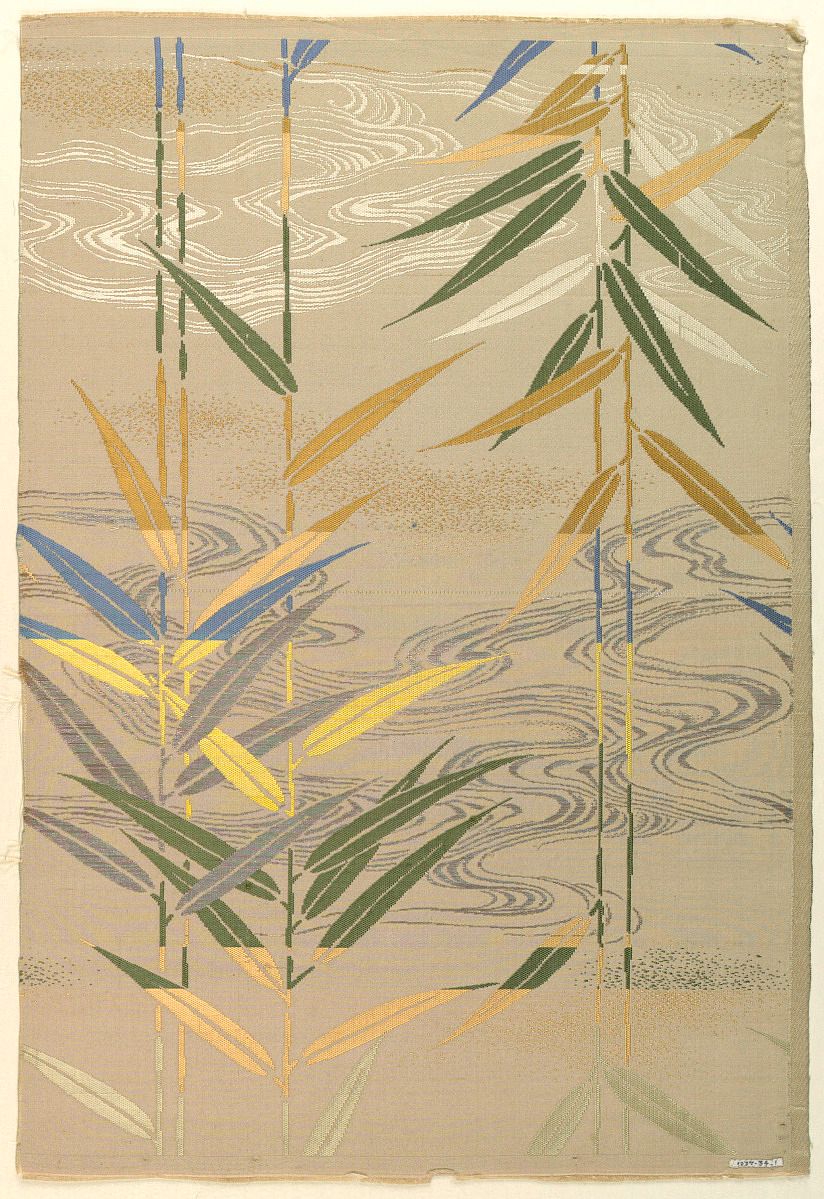
Description: Panel of tan silk with figured design of bamboo branches in green, yellow, tan, blue silks, and gilt paper.
Date: late 19th century
Medium: silk, gold paper on silk core
Technique: plain compound twill
Made in: Japan

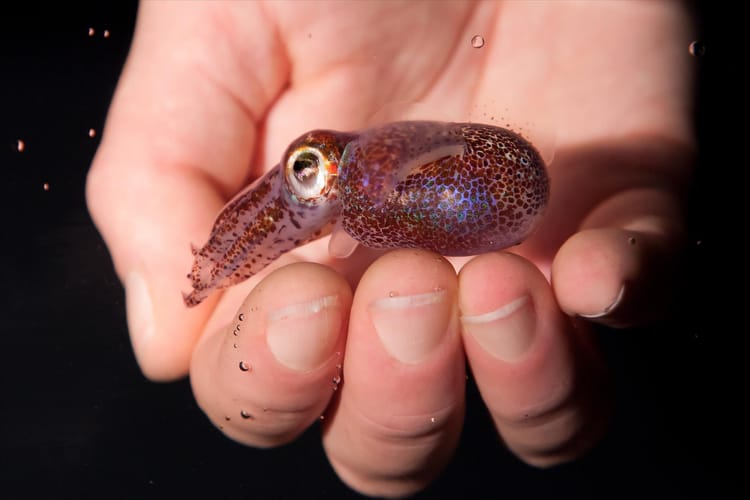

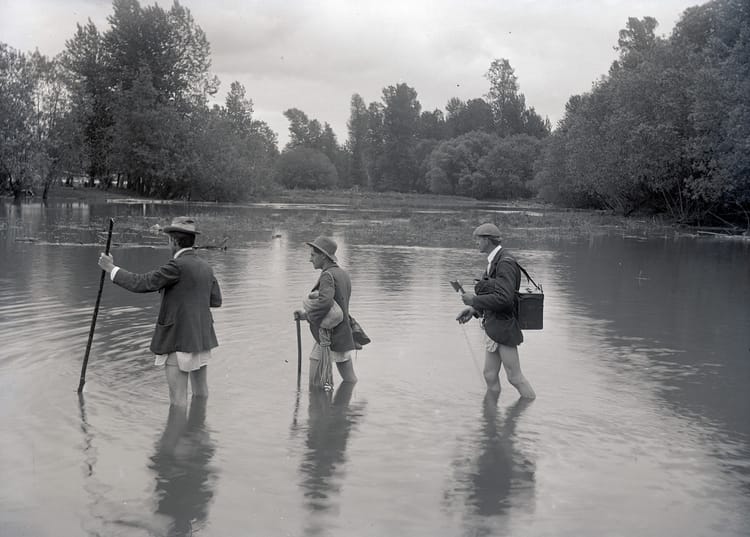
Comments ()